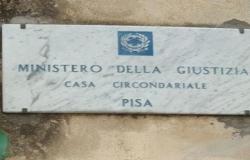LECCE – The third report on the construction supply chain was presented this morning in Lecce, at the Chamber of Commerce. The Construction Observatory of the province of Lecce has published a new volume containing unpublished studies and insights, enriched with colorful graphs and statistical tables on the construction sector. It is the result of the third edition of the research and data processing project, promoted by Confapi Lecce, with the involvement of the other Salento employers’ associations and with the contribution of the Lecce Chamber of Commerce.
Speakers included Giuseppe Petracca, from Confapi Lecce, Alessandro Delli Noci, regional councilor for economic development, Mario Vadrucci, president of the Lecce Chamber of Commerce and MEP Denis Nesci. The report was entrusted to Davide Stasi, data analyst at the Building Observatory. Also present were representatives of the employers’ associations and professional associations of the province of Lecce.
The volume contains unpublished studies and insights, accompanied by graphs and tables, to provide a summary of what happened during 2023 and in the first months of this year. The publication was edited by Stasi, with contributions signed by MEP Nesci, councilor Delli Noci, lawyer Arturo Cancrini and doctor Salvatore D’Agostino.
“We are at the third edition of the research work of the Building Observatory”, underline from Confapi Lecce. “Starting from the national context, we then focused our attention on our territory. This work aims to be, on the one hand, a snapshot of reality and, on the other, a possible stimulus for the institutions”.
Focus on the province of Lecce
The 2024 edition examined the performance and characteristics of construction companies in the Italian regions and provinces, with a focus on those based in Lecce and its province. This is followed by an in-depth analysis of the labor market and production prices in the construction sector, with a comparative analysis of the costs of raw materials. Ample space was reserved for the new Public Contracts Code and the digitalisation of procurement. The centrality of the construction sector in the implementation processes of the Pnrr is then highlighted, while highlighting the limits in accessing the relevant data.
2023 was a year of ups and downs for the sector, due to geopolitical instability, the increase in raw material prices, continuous regulatory changes, but not only. After the strong recovery in the two-year period 2021-2022, the works encouraged by the construction bonuses have progressively suffered the “squeeze” imposed by the Government. The measures issued have generated delays and confusion among professionals. However, over the course of last year, much-anticipated news arrived in Salento: the publication of the tender notice for the construction of the state road 275 Maglie-Santa Maria di Leuca works.
The results of the survey on public construction
Tenders with a value greater than 40 thousand euros were examined: a sample of 838 tender lots, published from 1 January to 31 December 2023 and referring to works carried out in the province of Lecce, were analysed. Of these, 349 relate to the works envisaged by the National Recovery and Resilience Plan (Pnrr) and the National Plan for Complementary Investments (Pnc) for a total amount of 245 million euros (245,042,163 euros).
The total amount of the works, for the 838 lots examined, amounts to 396.4 million euros (396,457,609 euros) while the amount of the tenders amounts to 402.9 million euros (402,891,599 euros). Regarding the tender amount, there are 561 class I lots (amounts up to 258 thousand euros). They represent 66.9 percent of the total. Following this, 81 lots, equal to 9.7 percent of the total, are class II (amounts up to 516 thousand euros); another 89 lots, equal to 10.6 percent, are class III (amounts up to 1,033,000 euros). Another 37 lots are class III-bis (amounts up to one and a half million euros) and another 51 lots are class IV (amounts up to 2,582,000 euros); seven lots are class IV-bis (amounts up to three and a half million euros); another seven lots are class V (amounts up to 5,165,000 euros); two lots are class VI (amounts up to 10,329,000 euros); one lot is class VII (amounts up to 15,494,000 euros) and two lots exceed 15 and a half million euros.
The largest lots
The largest lots are those relating to the “regeneration of the former Galateo real estate complex in Lecce through an innovative social housing intervention” (with the contracting authority Puglia, real estate value securitization company srl) for a tender value of 20,920,800. There is also the “Improvement of the purification plant serving the Casarano agglomeration” (contracting authority Acquedotto Pugliese spa) for a tender value of 15,571,858 euros. Followed by the “concession through project financing for the performance of redevelopment services, supply of energy carriers, operation and maintenance of public lighting and traffic light systems, redevelopment, thermal and electrical management of municipal buildings and for the construction and management of infrastructure aimed at the provision of smart city services” (with the contracting authority Municipality of Tricase) for a tender value of 12,009,699.
Regarding the award procedure, the direct one was used for 420 lots, equal to 50.1 percent of the overall figure; the open procedure for 176 lots, equal to 21 percent; the negotiated procedure for sub-threshold assignments in 135 lots, equal to 16.1 percent; the negotiated procedure without prior publication of the notice in 59 lots, equal to 7 percent. Many tenders are affected by some regulatory interventions which, intervening with some changes to the Public Procurement Code, lead to a sharp increase in the use of procedures without tender (direct award and negotiation without tender), removing a high number of interventions from full evidence on the market.
Tax breaks
An entire section of the volume is dedicated to the tax breaks introduced and extended, year after year, with the intention of encouraging the renovations and recovery of real estate assets, as well as redevelopments aimed at energy saving of buildings. Starting from the regulatory framework with the latest changes to deductions and incentives, we then arrive at the macroeconomic and public finance effects of construction bonuses.
Furthermore, it contains a series of in-depth studies on the value of the production of Salento construction companies and on credit in favor of companies heavily penalized by the increase, on several occasions and at unprecedented rates, in the interest rates decided by the European Central Bank. In the statistical appendix you can find the historical performance of the companies and the companies active from the crisis of the two-year period 2008-2009 up to 2023; an overview of employment in the construction sector across Europe; an update of the size of the real estate stock in Lecce and its province and, finally, the press review of the articles published in the main local newspapers and periodicals.
LeccePrima is also on Whatsapp. Follow us on our channel.





